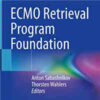Lung and Diaphragm Protective Ventilation Guided by the Esophageal Pressure
link.springer.comLung protective ventilatory strategies aim to limit tidal volume, driving pressure and plateau pressure to minimize lung stress and strain and consequently reduce the morbidity and mortality risks associated with mechanical ventilation.
This approach, however, often involves concomitant deep sedation and the administration of neuro-muscular blocking (NMBA) agents to control the potentially harmful patient-ventilator asynchrony and facilitate adherence to stringent ventilatory settings.
However, excessive unloading of the diaphragm contributes to its weakness and atrophy which is associated with greater risk of weaning failure and worse outcomes.
A “lung and diaphragm protective ventilation” (LDPV) strategy has been proposed as an approach aimed at addressing simultaneously the risk of ventilator-induced lung injury (VILI) and diaphragmatic dysfunction.
The aim of this strategy is to maintain or restore diaphragm activity during mechanical ventilation by titrating a respiratory drive to allow for sufficient diaphragm activity to avoid atrophy while preventing load-induced injury and hypertrophy, and in addition to also provide a safe lung-distending pressures minimizing patient-ventilator asynchrony.

















